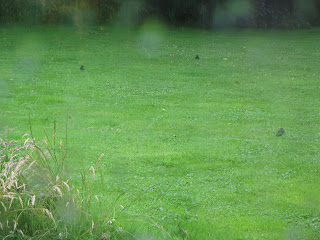...with bright blue eye
Your pains the Bugloss will repay
Your pains the Bugloss will repay
The viper's bugloss is out again on the dunes, where it will last for some weeks. It's a striking plant with its vibrant deep blue flowers. It likes bare and scrubby ground, often growing near beaches or on mine spoil tips, where its roots go down deep, and is one of those fascinating plants whose flowers emerge one colour (a deep rose) and then change. In classical times it was thought to be effective against snake bite, and its spotty stem probably gives it the first part of its name, but "bugloss" comes from ox's tongue.
In her Modern Herbal, published in 1931, Mrs Grieve tells us that it is a diuretic and can relieve inflammation and fever, though I wouldn't want to pick its hairy stems without gloves! Alternative names, according the Geoffrey Grigson, include Blue Cat's Tail, Snake's Flower and Our Lord's Flannel! I wonder if this last is because of the reddish spots on the stem, which may look like flecks of blood?










